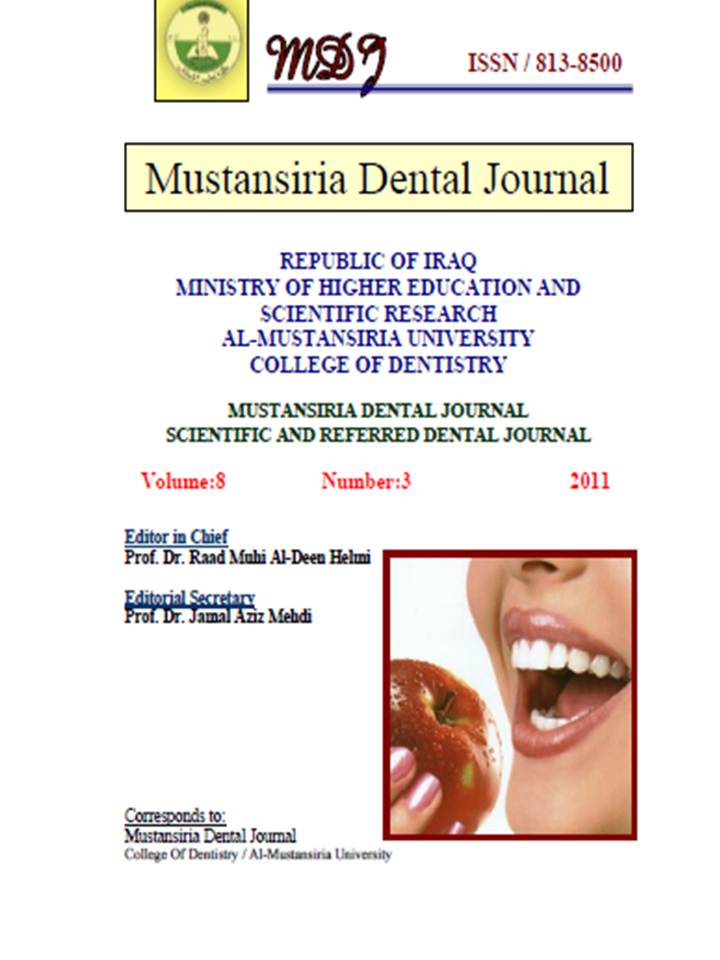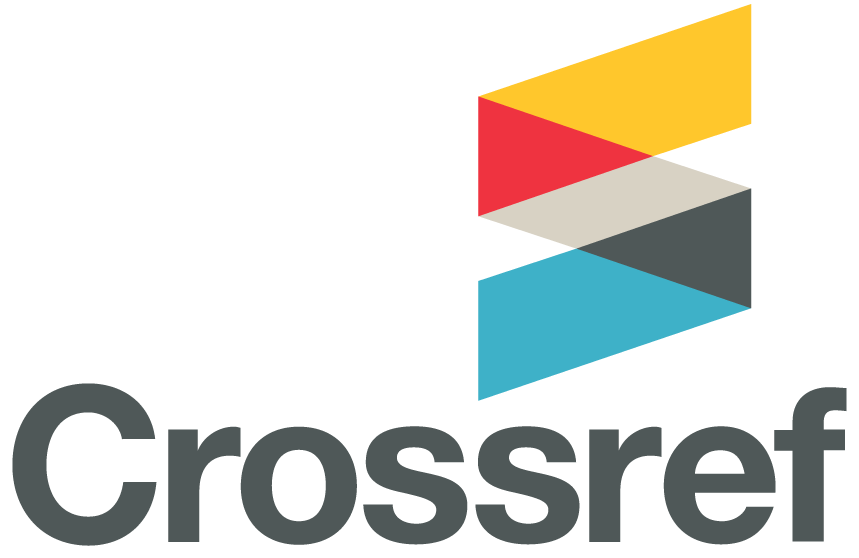Salivary sex hormones & its relation to periodontal status among pregnant & non pregnant women
DOI:
https://doi.org/10.32828/mdj.v8i3.353Keywords:
Keywords: Periodontal disease, pregnancy, salivary sex hormones.Abstract
Salivary sex hormones (estradiol/ progesterone) levels may rise dramatically &
may affect the periodontal health during pregnancy. The aim of this study was to
measure the level of estradiol &progesterone in stimulated saliva of pregnant women
& its correlation to periodontal status in comparison to non pregnant women.
A total of 26 women of the age group 20-24yr. attending the maternal & child
health care in the medical city hospital were selected at the 3rd trimester of pregnancy
& another 26 unmarried women were selected rand only. Saliva had been collected
for analysis of estradiol & progesterone & periodontal status had been evaluated using
plaque index (PlI), gingival index (GI), probing depth (PD) & clinical attachment
level (CAL), t-test, X2 & correlation coefficient were used where indicated.
The results revealed a significant difference in the mean PlI & GI among pregnant
& control groups. Pregnant women showed deeper pocket & more attachment loss &
a high mean of salivary sex hormones than control group with significant differences.
The results also revealed a positive correlations between probing depth, clinical
attachment level & salivary sex hormones while there was no significant weak
correlation between PlI, GI with salivary sex hormones.
All the periodontal parameter & salivary sex hormones in this study were higher
value in pregnant women than non pregnant with significant differences. More strong
positive correlations were found between PD, CAL with salivary sex hormones &
weak correlations with PlI & GI.

Downloads
Published
Issue
Section
License
The Journal of Mustansiria Dental Journal is an open-access journal that all contents are free of charge. Articles of this journal are licensed under the terms of the Creative Commons Attribution International Public License CC-BY 4.0 (https://creativecommons.org/licenses/by/4.0/legalcode) that licensees are unrestrictly allowed to search, download, share, distribute, print, or link to the full texts of the articles, crawl them for indexing and reproduce any medium of the articles provided that they give the author(s) proper credits (citation). The journal allows the author(s) to retain the copyright of their published article.
Creative Commons-Attribution (BY)








